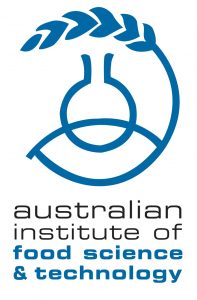
Messages around nutrition can be overwhelming, so overwhelming in fact that many consumers are left confused about which product to choose. Equally, it’s confusing for food manufacturers when evaluating just what nutritional features and messaging to include in and on their products.
For food manufacturers, a product that is naturally functional – that provides benefits that are intrinsic to that food or beverage – is the Holy Grail for consumer nutritional messaging. With regular and positive attention given to naturally functional foods by the media, very little in the way of overt health claims is required for these products.
So potent is the idea of ‘naturally healthy’ that many consumers will even overlook the energy value of a food! Dark chocolate, olive oils, red wine and nuts are good examples.
So what can we expect to be some of the top emerging naturally functioning foods throughout 2016?
Seaweed: stepping off the sushi train
Seaweed has an impressive resume in terms of natural health. It is high in minerals (calcium and iodine) and antioxidants, is a source of omega-3, protein and fibre, and is low in fat and sodium, as well as being lactose and gluten free.
Further, seaweed is also low in energy and one of the only natural, non-animal sources of vitamin B12.
Coconut: what’s not to like?
Coconuts are perceived as healthy, tasty, natural and sustainable for consumers, without coconuts actually having to say anything about themselves at all.
Coconuts are rich in fibre, vitamins (C, E, B1, B3, B5 & B6) and minerals such as iron, magnesium and potassium. They are also high energy density foods, due to the high fat content. However, a coconut’s saturated fats consist of the “healthier ones” among the saturated fatty acid group.
Beyond the popular coconut water market, coconut is cropping up in a number of food products, including coconut milk, coconut yoghurt and coconut flour.
Beans: more than ‘good for your heart’
Beans are a significant part of traditional diets in a number of countries, shifting from an overnight soaker to a convenient and tasty snack food.
Beans are high in soluble fibre and protein, antioxidants, vitamins and minerals such as copper, folate and iron, as well as being low in fat, low GI, gluten free and containing no cholesterol.
Beans are enjoying some serious time in the spotlight this year with 2016 being the UN-declared International Year of Pulses.
Sweetness: that sugar ingredient
Thanks to its suspected role in obesity, inflammation and disease in general, sugar has become the smoking gun of the food industry and consumers are rejecting sugar almost as much as high kilojoule foods.
Artificial sweeteners have been the main response to these barriers, although alternatives such as aspartame and phenylalanine are now undesirable for consumers as well. Stevia, the natural alternative to sugar, has not been as popular as early backers had hoped.
While consumers say they do want less sugar in food and beverages, many prefer it to be from a natural ingredient that’s easy to understand, such as honey.
There is even some evidence that globally consumers are shifting away from sweetness and perhaps even lowering their sweetness threshold, evidenced by the growth in savoury snacking.
Free from: is there anything left to avoid?
Gluten free has been a significant growth trend in recent years, although the key growth opportunity for the trend over the next 3 – 5 years is likely to be in dairy-free and lactose-free products. The strong growth of nut milks is evidence of a fast-growing dairy-free message.
Many naturopaths and personal trainers default to a dairy-free diet as a prescription for dealing with weight or digestive problems. Interestingly, when many people reduce, dairy or lactose, they report feeling the benefit – and feeling the benefit is one of the biggest motivators for anyone to buy a healthier product.
As with gluten free, the lactose-free concept is that it delivers a benefit that the consumer can quickly see or feel.
Sarah Hyland is AIFST’s General Manager of Industry Services. If you are interested in learning more about trends and nutrition, please contact Sarah on 02 9394 8650 or at [email protected].
The Australian Institute of Food Science and Technology (AIFST) is the only national independent voice and network for Australia’s food industry professionals. The Institute underpins its members’ contribution to the Australian and global food industry through skill and capability building, up-to-date industry news and information, as well as access to career development and business opportunities to support the production and utilisation of safe, high quality and nutritious foods. For more information visit www.aifst.asn.au